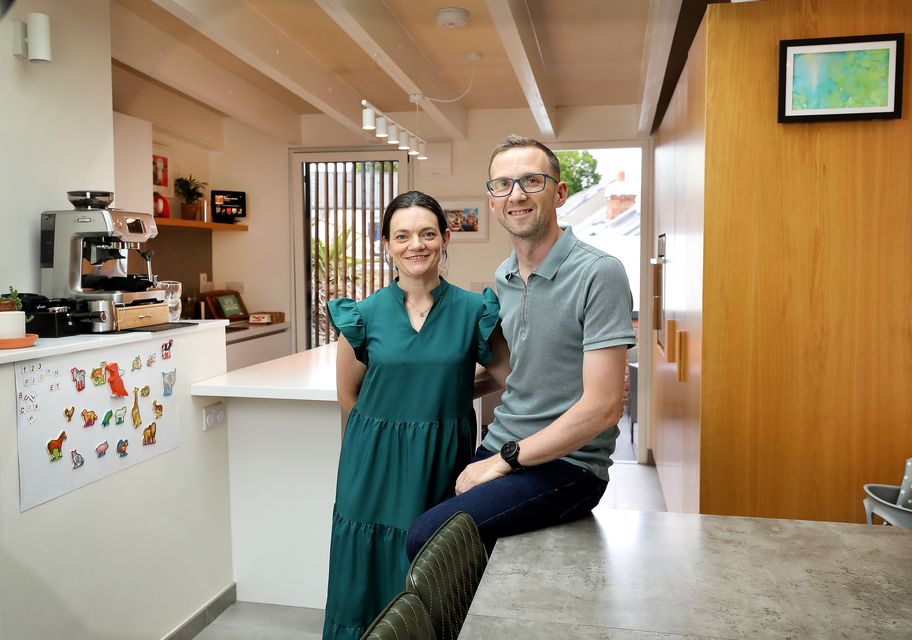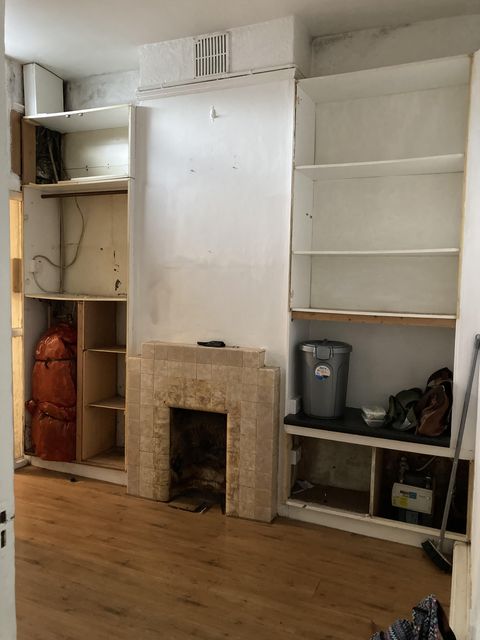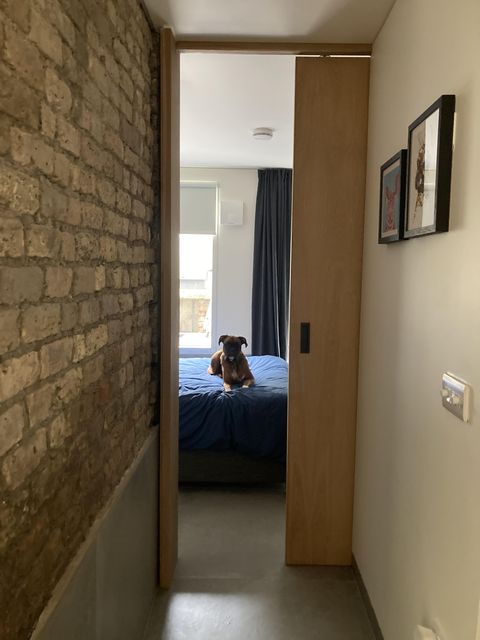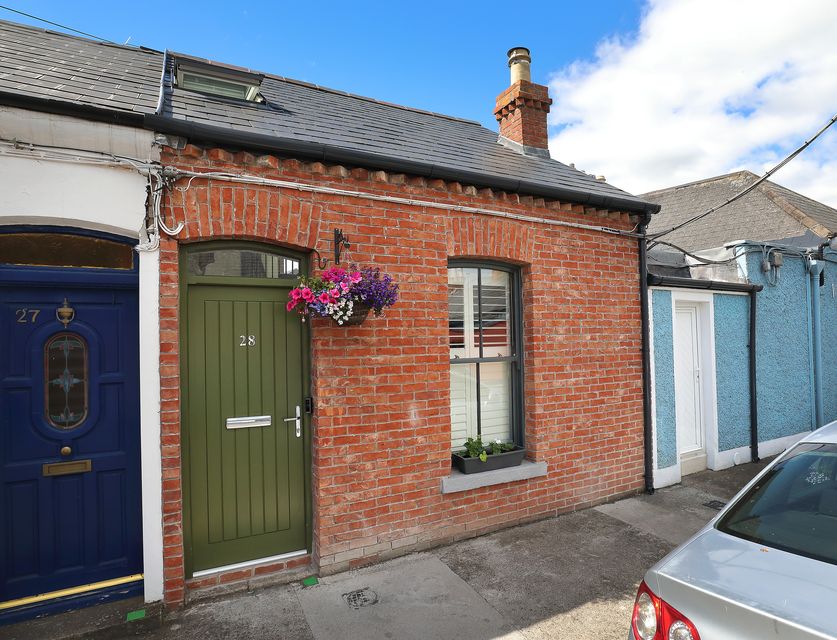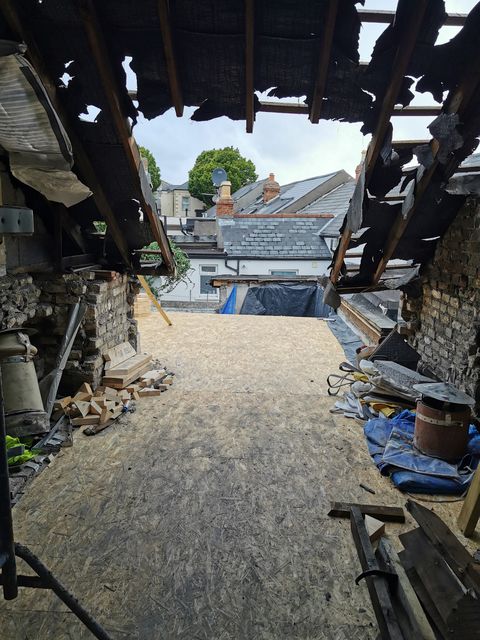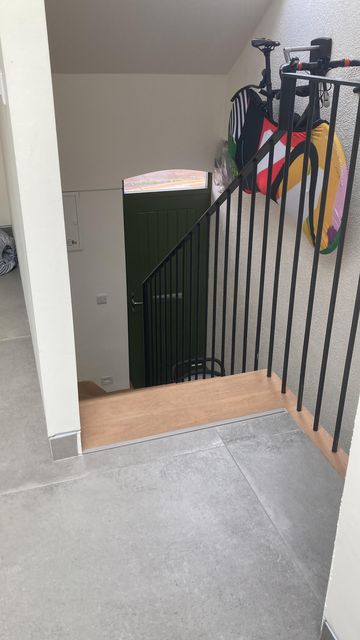Entertainment
Operation renovation: ‘I never thought I’d be able to afford a house in Dublin, let alone one smack in the middle of the city’
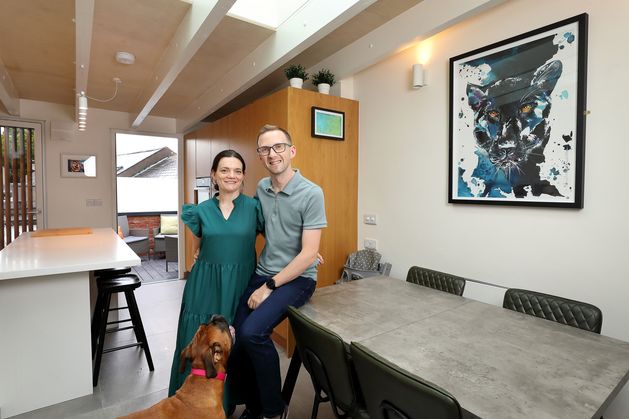
When Elaine Buckley set her heart on turning her tiny 136-year-old artisan cottage into a family home, she struggled to find builder brave enough to tackle her ambitious plan, which involved flipping upside down and creating in a second storey
Being a Limerick native, there may have been some temptation to ‘move home’ and get bang for her buck, but it becomes clear after just a few minutes of conversation that there’s a certain mettle to her metier.
“The builder who eventually came on board had initially said no too,” says Buckley. So what was so daunting about this cute 37sq m cottage?
For starters, it’s a 136-year-old, historic, single-storey cottage with little or no access, and Buckley’s plans had tipped it for double-storey greatness with a concept designed around inverted living: bedrooms downstairs and kitchen and living area upstairs. No mean feat when no walls are straight and you can hardly get a wheelbarrow near the place. On top of that, the cottage needed repair work, especially the heating and flat roof extension.
The cottage’s dark old kitchen
Elaine Buckley and Ronan Cox in the open-plan living/kitchen area in their renovated cottage in Phibsborough. Photo: Frank McGrath
The house has stairs leading up to the kitchen and living area.
Having purchased the property in 2019, she had the benefit of two years of Covid’s tumbleweed effect to mull over the design and reimagine the pokey dark interior, which felt fundamentally misaligned with her modern lifestyle, into the sleek 667 sq ft modern home it now is, one that functions and flows expertly despite its still compact size.
And yet, it had redeeming features — architectural details and historic charm, such as the original red-brick walls, one of which remains (nails included) intact in the living area, and an original granite sill discovered by the builders in the foundations that was repurposed as a seat in the yard.
“Taking on such a big project on quite an old house was daunting but I was clear in my mind what I wanted to achieve while being realistic with the space available to me,” she says. “I utilised every square inch of space and I know the house is the best it can be.”
In order to achieve this, major foundation work was required. Not to mention flipping the original designs that incorporated a traditional approach to living with one that put the everyday living upstairs.
The existing ground floor was lowered by 500mm, which involved a fairly major excavation and work which had to be done by hand given the delicate nature of the structure. Demolition and replacement of the rear extension with corrugated steel and larch timber screening for a rear veranda followed, and a rebuild of the red-brick facade.
Having an A-rated home was important for Buckley, so installation of an air-to-water system along with underfloor heating, rewiring and replumbing and installation of triple-glazed windows and doors with bespoke handmade sash details ensued. On top of that, no wall in the existing house was actually straight so every single tradesman had challenges measuring up.
“There was a lot of standing around scratching heads,” says Buckley. “Our kitchen supplier had to make everything on site to ensure it fit, and even the handrail for the stairs had to be rejigged as every time it was put up, it looked off-kilter due to the stairs being wonky.”
It was a similar headache with furniture; nothing actually fit. With limited space, everything that comes through the front door has to be considered carefully, and has to be exceptional.
Elaine and Ronan in their renovated cottage
The old living room
Some of the original brick wall remains in the house
“I did have this beautiful G-Plan sideboard which I bought for €100 and managed to squeeze into my very tiny Polo but couldn’t fit it in the house so reluctantly sold it. I’d love to furnish the place with mid-century pieces but unfortunately the house dictates.”
The dining table, for example, was made to fit the small space and can extend to accommodate eight people when required. Even the sofa was carefully measured, and a wall bed, assembled by Buckley just four months after giving birth to her son, allows for additional guests without compromising on the living space.
“I’m the flat-pack queen,” she says of her DIY skills. “When someone gives me a challenge, I like to challenge them back. I’ve learnt that the biggest mistake you can make when renovating is to stay silent. If you don’t understand something or want to change something, speak up — with a home renovation, there’s no room for regret.”
Elaine Buckley and Ronan Cox ‘s cottage in Phibsborough.Picture Credit:Frank McGrath
The decision to incorporate the rear veranda was not in the initial design specification but was something Buckley pushed for with the architect. There were doubts that permission would be granted but it went through without issue, and the area is used on an almost daily basis.
“It’s one of my favourite spaces in the house. I love the wood-charring Shou Sugi Ban effect, a Japanese method of sealing the wood, which instills a lovely sense of warmth on a chilly day.”
The thing about a small house is that, while you only have a small area to work with, it requires thinking outside the box, using every inch of space cleverly, which she has done with aplomb. Being a small family home, furniture choices are durable and wipeable, decor is simple throughout with uniformity where possible — the same Italian porcelain tile, for example, is used on all floor surfaces and within the bathroom to create a sense of flow.
Renovation work underway at the cottage
The couple hangs their bike with a Maser cover, doubling as art work in the hallway
Doors and screening made from birch and oak contrast the black steel frame stairs and white walls, while colour is found in the fabrics, plants and art works.
While she had a clear idea of how she wanted the house to look and feel and work for her, she did take some inspiration from Room to Improve, mainly the importance of light. Given the rear of the house is west-facing and gets the sun in the afternoon and evening, glass features very prominently upstairs, including a large fixed roof light.
“The open-plan living and kitchen space is probably my favourite space in the house. Due to the orientation and the wooden slats covering one of the rear windows, the sun filters through in the evening and provides a wonderful contrast between light and dark.”
She may have had to sacrifice the G-Plan furniture but her personal stamp still manages to make an impression through her choice of art. Irish artists Solas and Maser feature throughout the home, often walking the line between function and aesthetics.
“My husband cycles everywhere so we hang his bike from a pair of old German handlebars on the wall and I used a print by Maser on the bike cover, so now it doubles as a piece of art.”
It’s these ingenious design hacks that come with knowing your home and how it can work for you, irrespective of its shape or size that make it shine. “It all comes down to money and what you’re happy spending it on,” says Buckley.
“I never thought I’d be able to afford a house in Dublin, let alone one smack in the middle of the city, but now I can walk to work, there’s no transport stress, my partner cycles with our little boy on the back of his bike so he’s not stuck in a car. It’s all about perspective, and that’s the trade-off.”



